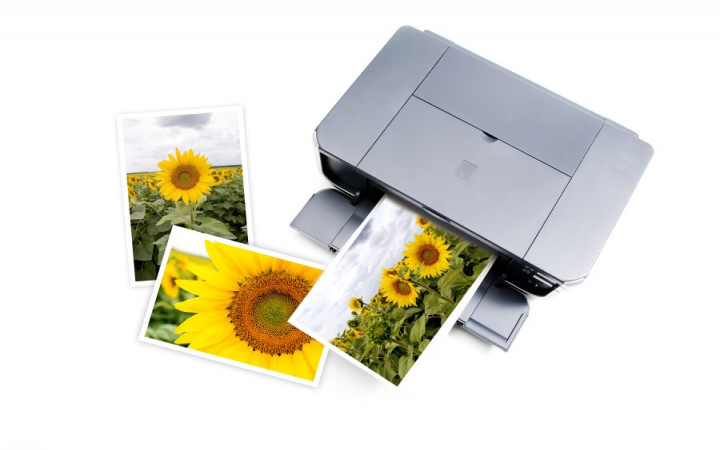Today’s Wonder of the Day was inspired by Mr. Craft & Mr. Thornton's class from Charlottesville, VA. Mr. Craft & Mr. Thornton's class Wonders, “How does a color printer print all the different colors? ” Thanks for WONDERing with us, Mr. Craft & Mr. Thornton's class!
Aren't you glad you live in modern times rather than the Middle Ages? For example, if your teacher assigns a three-page essay, you can type it on your computer and, when it's finished, simply print it out on a printer to turn in.
Back in the Middle Ages, though, you would've needed to use a scroll of parchment, a bottle of ink, and a quill from a bird feather. And you'd best not make any mistakes. There's no way to edit ink on parchment, and it's not easy to erase either!
Sure, we're a bit spoiled by modern technology. If you have a computer (or several) at home, there's a good chance you also have a printer. In fact, it's probably an inkjet printer, and it most likely can print in vivid colors. Using special photographic paper, you might be able to print your own photograph-quality images right at home.
Have you ever WONDERed how this is possible? If you look inside an inkjet printer, you'll probably find just four ink cartridges: cyan (a bluish color), magenta, yellow, and black. Newer models may have a few additional colors, such as light cyan, light magenta, and gray. How are such vivid color images featuring every color of the rainbow produced by just a few colors of ink?
Inkjet printers work by applying tiny droplets of ink to paper. This is usually done using one of two technologies. Thermal inkjet printers use heat to create bubbles of ink that "pop" out of the nozzle onto the paper. Piezoelectric inkjet printers use small electric charges to make a crystal vibrate, pushing ink out of the nozzle onto the paper.
How tiny are those droplets of ink? They're usually about 50-60 microns in diameter, which is smaller than the diameter of a strand of human hair! The droplets are also positioned with extreme precision with resolutions of over a million dots per square inch.
To make different colors, different amounts and proportions of each of the inks available are placed as dots on the paper. Sophisticated computer chips inside the inkjet printer convert the electronic image data into precise instructions that are sent to the print head, which in turn communicates with the ink cartridges to tell them exactly how and when to produce their tiny droplets of ink.
For an image, each ink will have a value ranging from 0 to 100, where 0 means none of the ink is used and 100 means the image is completely saturated with the ink color. For example, if you wanted to print a picture of green grass, you might use the following combination of inks: 75 cyan, 0 magenta, 69 yellow, 31 black. But, if you wanted to print a picture of a fire truck, you might use 0 cyan, 92 magenta, 98 yellow, 33 black. By tweaking the values of each ink, a printer is able to produce countless colors.
Inkjet printers work via subtractive color mixing. As different colors of ink are combined, each ink absorbs (subtracts) its characteristic colors and amounts of light. The light that is then reflected back to our eyes is what we see as different colors.
For example, to produce the color white, no ink dots are needed, since the white paper being printed upon will simply show through. To make black, however, large dots of all the inks would be used. To make red, magenta and yellow inks are used, since magenta absorbs green light and yellow absorbs blue light, resulting in only red light being reflected back to our eyes.
If you've ever used different colors of paint on a palette, you probably understand the basic mechanism of color printing. If you mix blue and yellow paints on your palette, you'll get green. Your inkjet printer makes green in a similar way, using millions of tiny droplets of precisely-controlled mixtures of ink in its cartridges.
Today, color inkjet printers are fairly inexpensive. You might actually find that a quality printer can cost less than a full set of ink cartridges. That's because printer technology is relatively cheap and the profit margin on ink cartridges is better. Printer manufacturers sell the hardware at a cheap price, knowing that you'll buy many sets of ink cartridges during the lifetime of the product.





